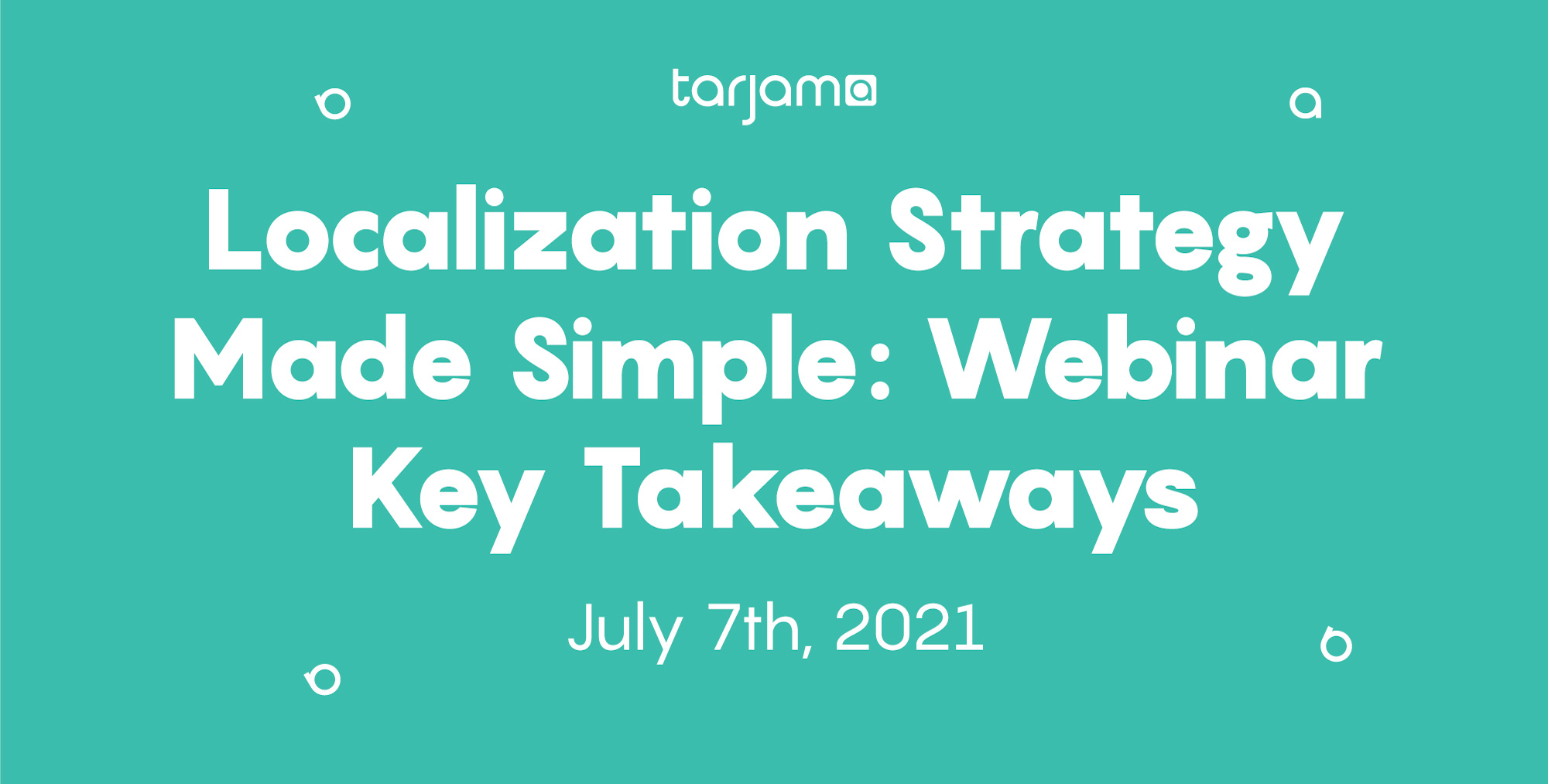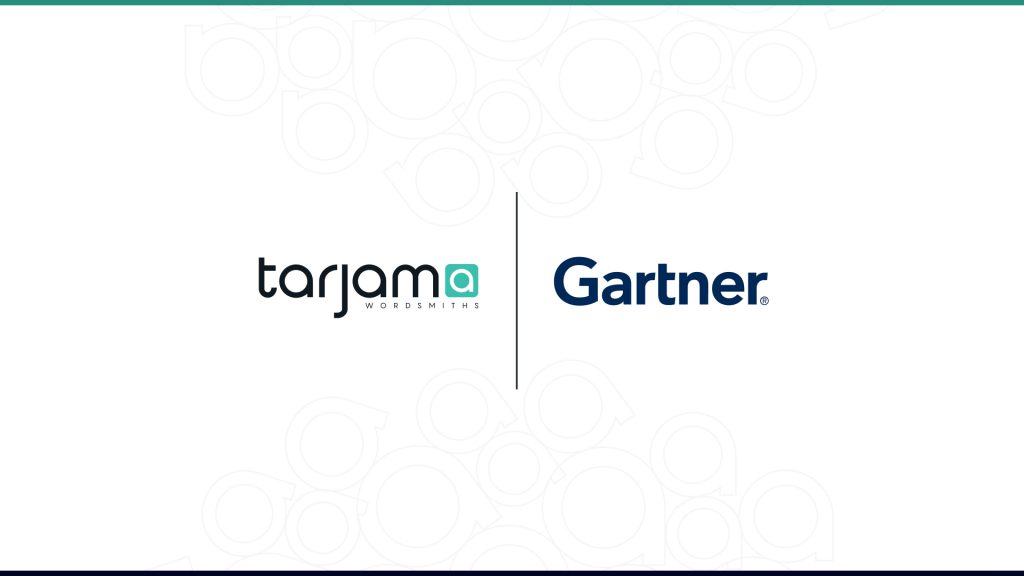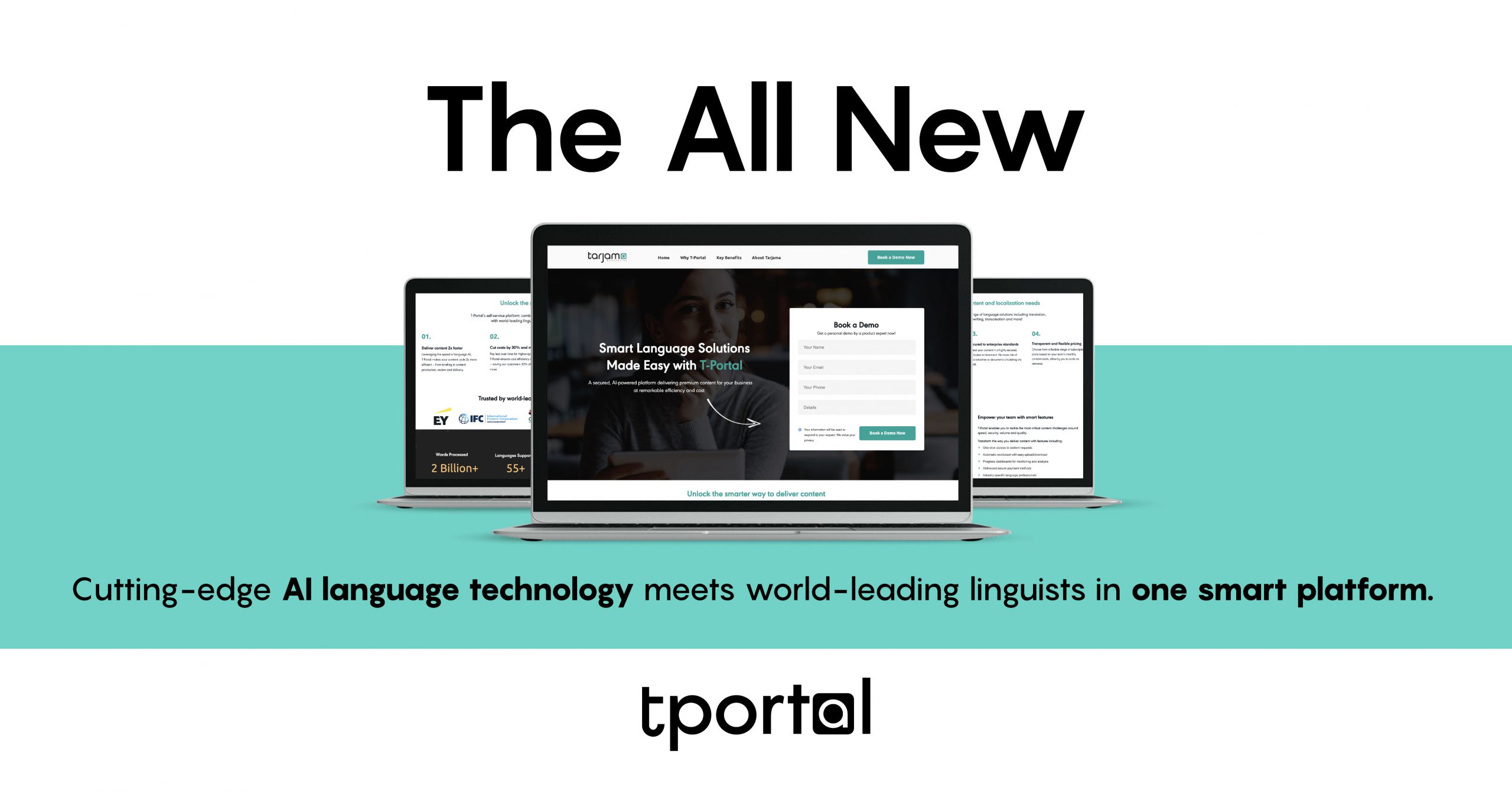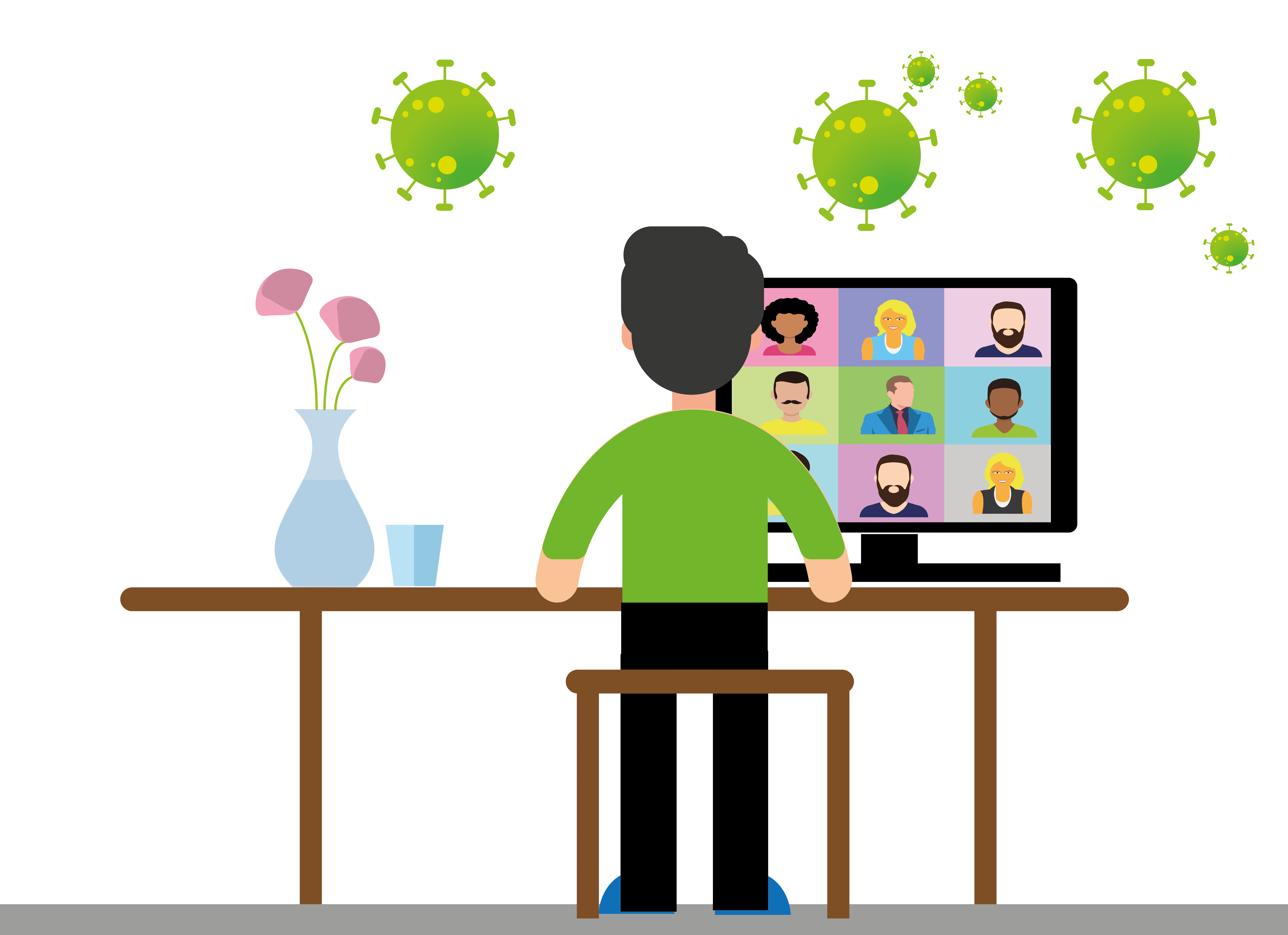In our first session of our Localization Webinar Series on July 7th, 2021, we focused on how to set a localization strategy with a well-planned and efficient plan.
The speakers were experts from the Tarjama family: Emmy Sarkes, our host and Product Marketing Manager; Nour Hussein, Chief Growth Officer; and Mahmoud Abdelaziz, Business Development Director. They brought invaluable insights for businesses that want to expand globally and reach new customers.
Here are the most important takeaways from the event:
In today’s digitalized world, localization is a must rather than a preference. One type of method, language, and content does not work anymore. Customers want customized products and content, addressing them genuinely and individually. The importance of localization practices grows daily, and companies must keep up with the global market to compete.
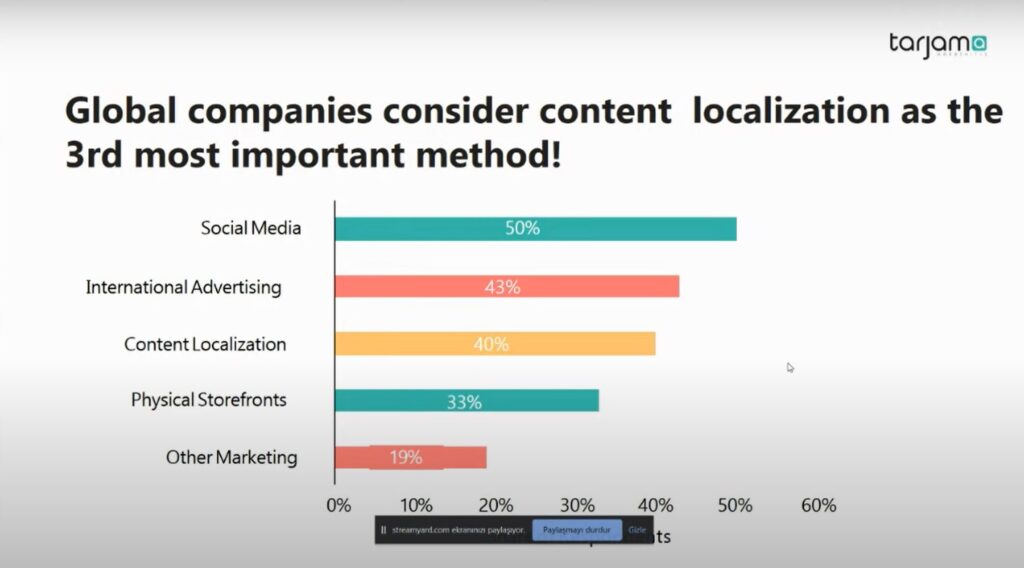
The key to growing and leaving a mark on the global market is implementing well-defined localization practices, building a solid strategy. Abdelaziz mentions a study showing which methods companies consider the most important for expanding new markets. The first two are social media and international advertising. Localization comes third. He states that localization is at the core of other methods. “This huge trend with global companies prioritizing and investing in localization is because it’s the method to grow and expand into new markets,” he remarks.
Why is Localization So Important?
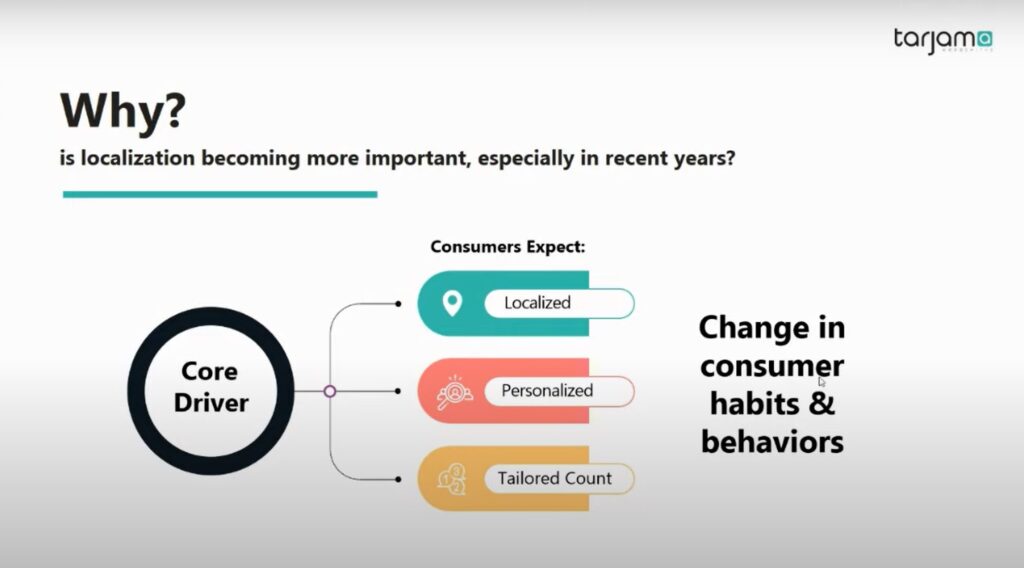
The most crucial point of localization is the change in customer behaviors. Hussein summarizes the growing importance of localization: “…consumers now expect their content to be localized; they expect it to be personalized; they expect it to be a bit more tailored to them. And when you look at it, users mostly browse content in their native language…When you’re browsing content underneath in your native language, you’re also more likely to purchase content available in your native language. So there’s that element of trust for a brand that communicates to me in my native language, but also the changes in consumer habits and behaviors are causing companies to try to focus heavily on localization.”
English is a global language, but studies show that most international customers prefer seeing content in their native language. E-commerce companies must ensure that customers have the confidence that they are buying the right product. Content that is available in multiple languages also shows a company’s reliability and value. Localization builds trust and relationships between a business and its customers, creating regular engagement and conversion.
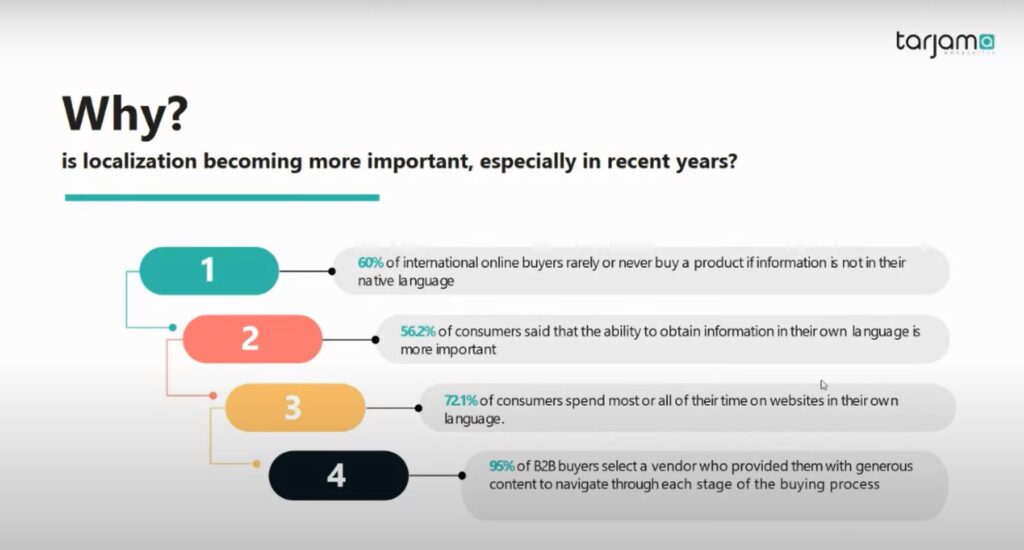
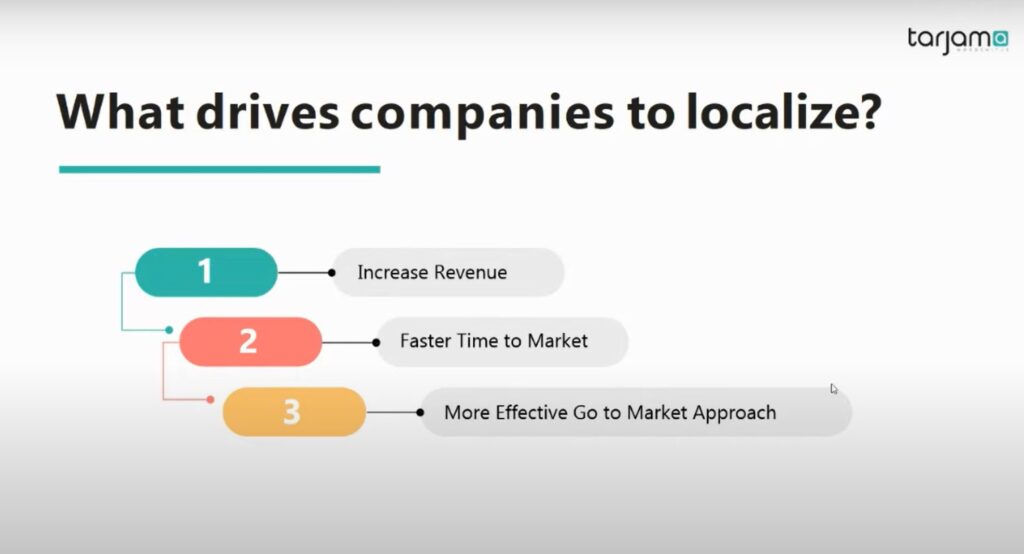
Hussein states what drives companies to localize: “…the first thing that you notice, whenever you’re sitting with a client that doesn’t have localization expertise or hasn’t moved into localization yet, is that their first question is, how do we do it? Where are we supposed to start? So there are many questions that they don’t see the end goal, they can’t physically understand when will the money start coming in. …So properly localizing your content would help you start selling faster. And that is pretty much the goal after localization.”
What is the Difference Between Translation and Localization?
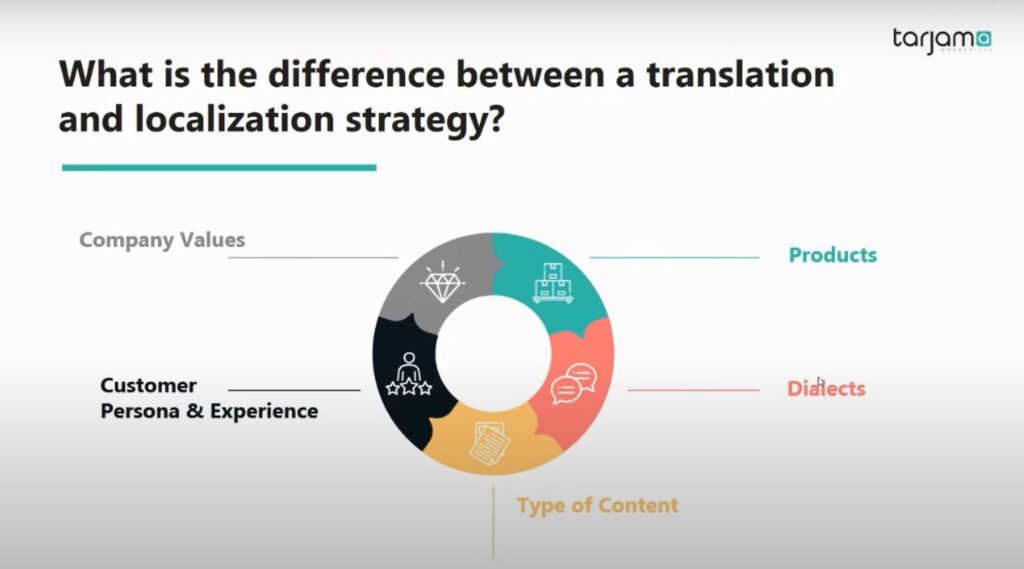
People often think translation and localization are the same practices. However, they are parts of end-to-end marketing projects and strategies. Abdelaziz summarizes the topic perfectly: “…they are completely different things. Because localization is the entire process of adapting a product or content to a specific market and a specific market location. Yes, translation is part of the localization process, but so is content creation, so is copywriting. So is modifying your graphics and designs to display your products or your services to the market properly.”
Sarkes states that localization is a holistic practice that involves many departments such as products, marketing, content, software, and translation. The whole company needs to align for a specific goal and work harmoniously. Localization is more comprehensive than translation. It requires advanced assistance from CAT tools such as translation management systems (TMS), similar to CleverSo, and Neural Machine Translation (NMT) like Tarjama’s advanced MT, to get the most out of machine speed and human creativity and accuracy.
How Do You Start?
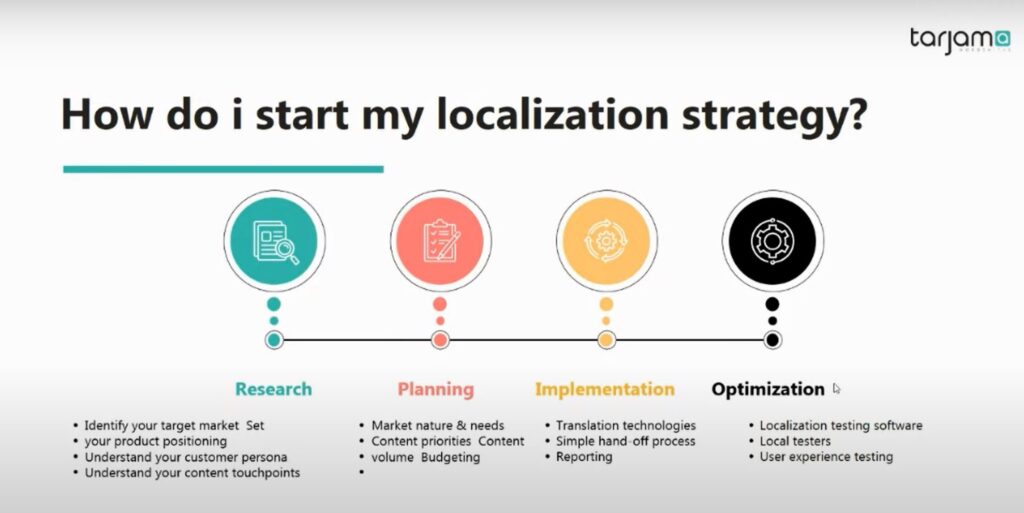
There are four stages of building a localization strategy:
– Research
What is your goal? Is your content going online? What is your target audience? To save time, it is crucial to properly understand and define your product and its positioning, your customer persona(s), your content, and your touchpoints. Hussein continues: “…Once you get that understanding, and it’s not a comprehensive process. …there are templates that we can offer in support; it’s a fairly simple process, then you can go a little bit more towards the planning part. And this is trying to understand a bit more about your market nature, or your market needs, your content priorities itself. And accordingly, what priorities do I need to have? So some customers who wish to expand to the Middle East, the first thing they come up with is, we want to translate our entire website, and a lot of times we advise them that you don’t necessarily need to do that. Perhaps you can start with a landing page. And then you know, a couple of consistent blogs, because the difference between having a localization strategy is understanding that I’m not just going to translate but instead have the concept of continuous localization.”
– Planning
The planning stage is one of the most important steps as it is the mechanism that carries out the whole practice of localization. Planning once, building one localization strategy, and following it for all markets and customers will not bring value. It should instead be constantly revised, optimized, and renewed. It would be best if you also kept enhancing your content, making it richer and more genuine. Hussein remarks the importance with examples: “… planning properly will also help you as a localization manager or translator for a business, build the case with your organization. So that at the implementation stage, you’re not overwhelmed. …translators, heads of translators, heads of localization, we deal with those who have no time to breathe, they have no time, you know, because as they say, you have a leak in the ceiling, and you’re busy wiping the floor. So they’ve missed planning the project so they go straight into implementation.”
– Implementation
At this stage, you have advanced CAT tools that help you plan and reduce your workload. For example, T-Portal merges native translators with AI, giving you a seamless, automated experience in tracking your translation projects. Getting reports and tracking your growth regularly with your localization partners is crucial. Hussein continues, “…At the end of the day, we also need to showcase our management. Why is this going well? What’s the progress? And a lot of times, when you’re looking for a translation service, you get a translation service. When you’re looking for a localization partner, you should be looking at what reports do I want to see; I want to make sure on a weekly basis, I’m following certain metrics and milestones.”
– Optimization
All these stages contribute to creating a localization strategy that is solid and operates well. However; your strategy should be continuously updated. There needs to be consistent optimization with the content, CAT tools you use, and user experience testing. As Abdelaziz likens building localization strategy to going to the gym: “You’re not going to lose your kilos or buff up within a week. You need to go at least three to four times a week for the next six months for you to start seeing those results.” Monitoring your localization practice and making necessary changes with your strategy will give you the results you want.
When Do You Need Assistance?
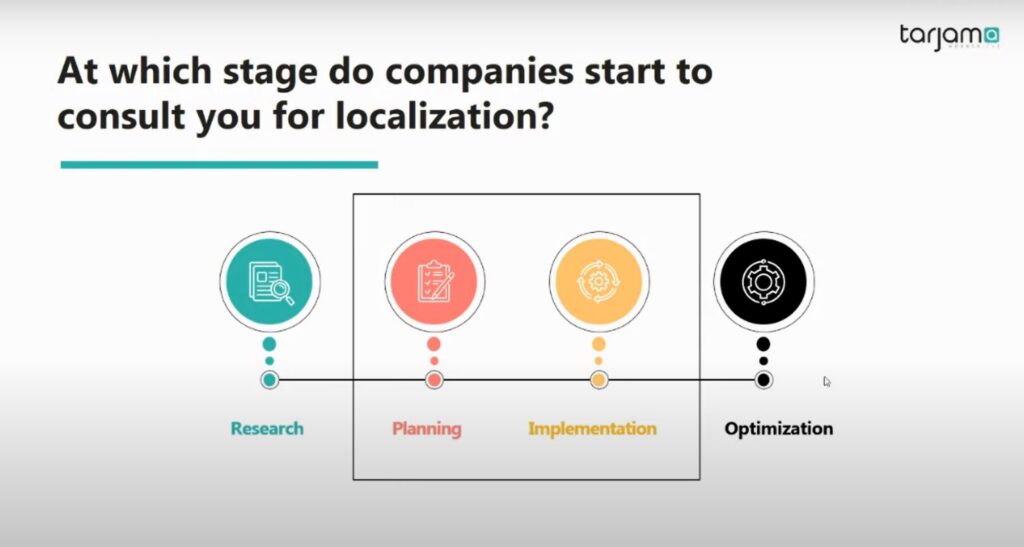
Planning and implementation stages are the steps that should work with professionals. Abdelaziz stated that “…choosing your localization provider or consultant can really seem intimidating. Am I looking for the cheapest translation? Or am I looking for consultancy? …So when you get to the planning stage, and you need to understand when am I going to start seeing results and how am I going to see those results is exactly when you need somebody to step in and let you and assist you..”
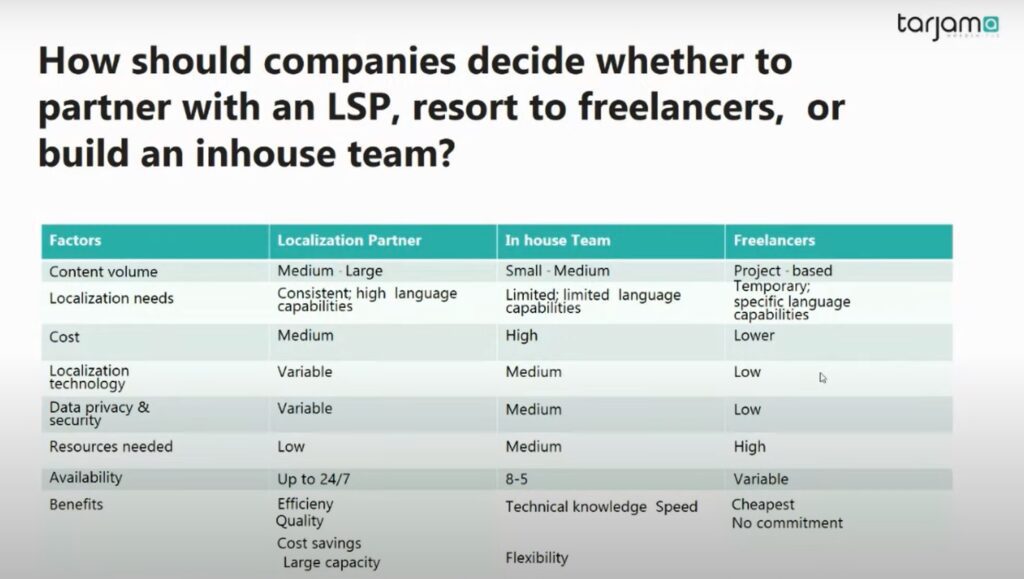
Hussein remarks: “This is where you need to start looking at translation technologies. It’s 2021. Let’s start looking at systems and tools to help us automate and run our processes faster. And think of the handoff process.” Indeed, there are high-level translation tools such as CleverSo. These tools help translators, editors, and localization experts work quickly and efficiently. It is up to your needs in terms of who you should work with your localization practices. Our chart above would give you a general idea.
Common Mistakes in Building Localization Strategies
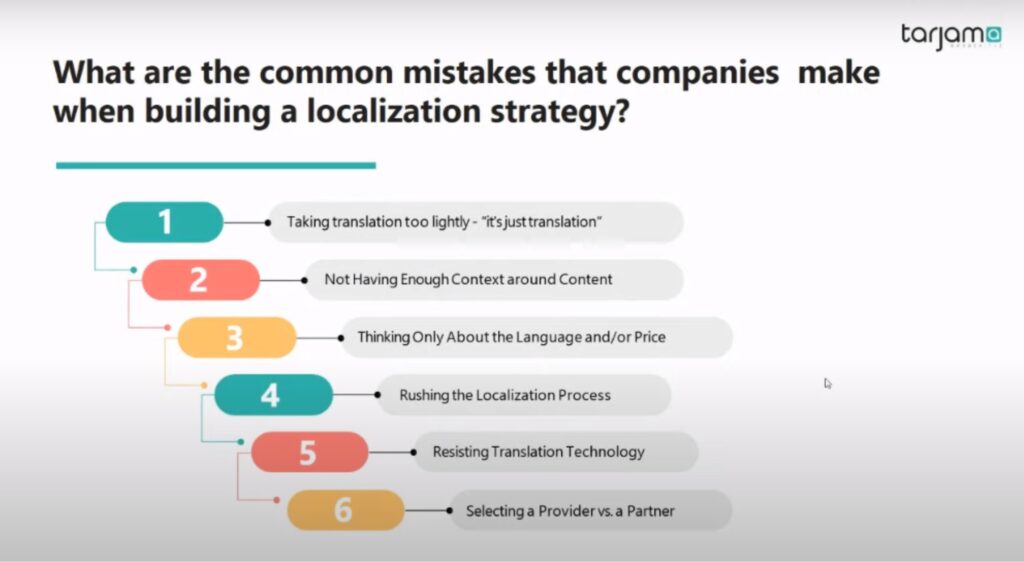
Mr. Abdelaziz states that “…people think that content is cheap. Proper content, localized content that is related directly to your strategy, is something that shouldn’t be ignored. It should have its own budget; a whole team should represent it. It’s not just, ‘Hey, I would like to translate some documents.’ No, it’s a complete strategy.”
Another common mistake that companies make is not comprehending the new era of new technology. Rushing up the process and dictating can ruin a company. Hussein adds: “I think the biggest mistake in my view is not seeing the role of localization as a strategic role. A lot of times, it is seen as the bottom of the food chain; we’re just here to receive content and translate content.” Localization is an operation itself, requiring budget, planning, teamwork, and, most importantly, time.
Be the first to know about our upcoming episodes in the series. Join our mailing list!
